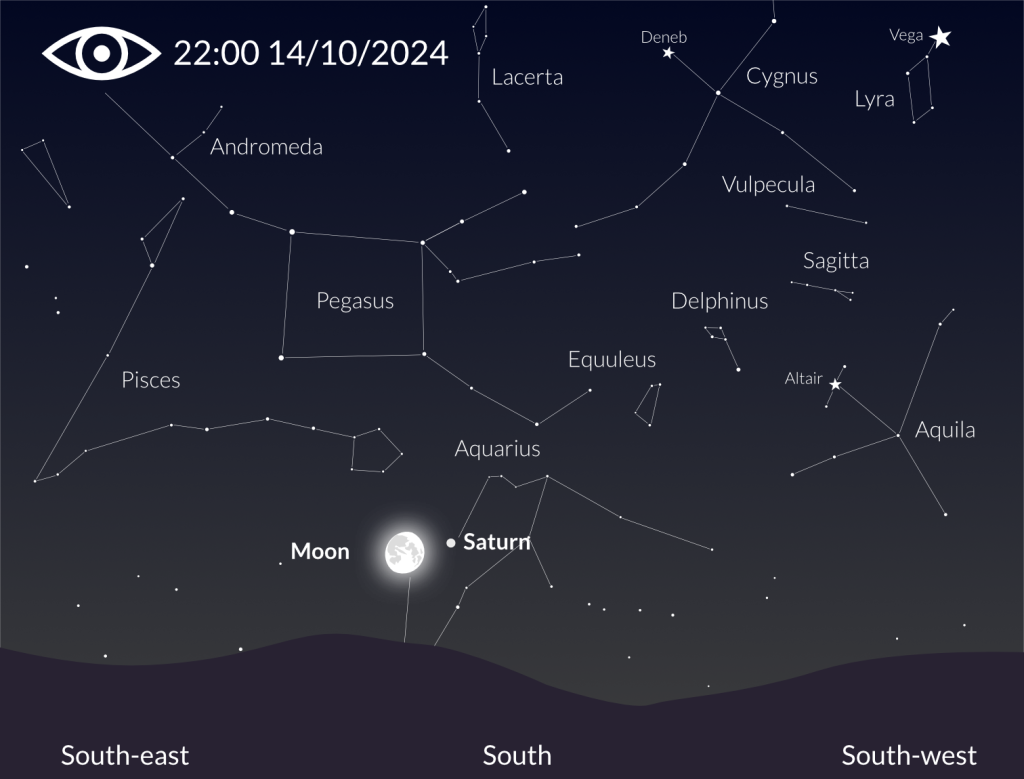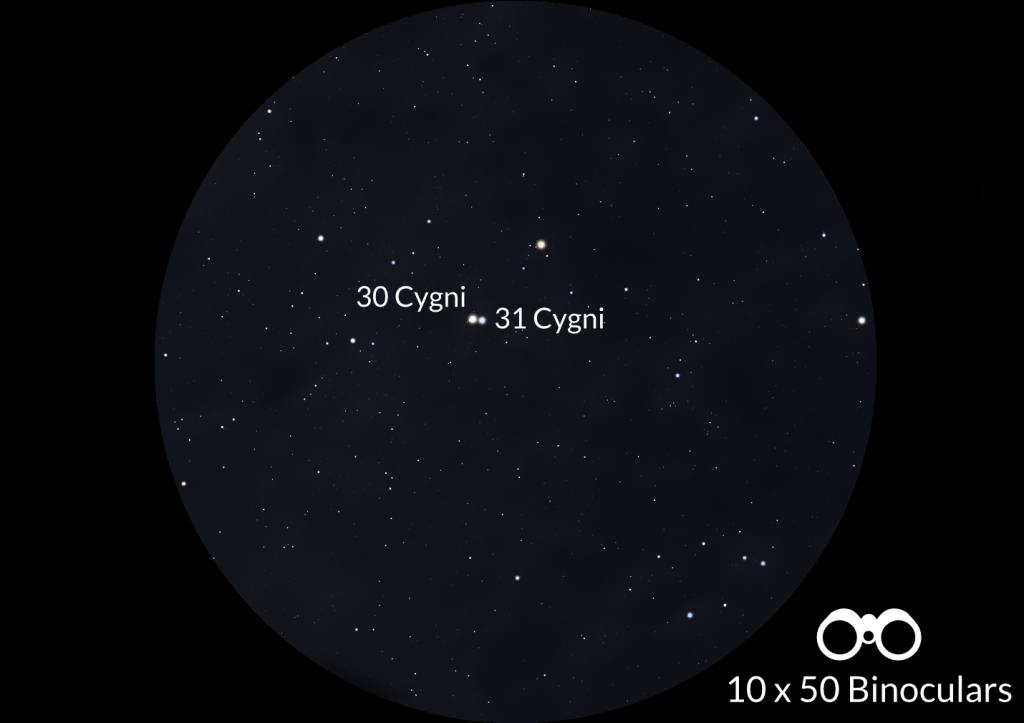Welcome to this month’s update to what’s in the night sky for October.
The nights are really drawing in this month and it’s a great time to stargaze without having to burn the midnight oil. There is also a lot going on in this autumn month with a possible unaided-eye comet and a meteor shower to look out for.
Darkness falls at around 8.40pm at the beginning of the month and 6.40pm at the end.

At 10pm, the constellations that are dominant in the southern night sky during October are Pegasus, Aquarius and the faint low-lying constellation of Capricornus. Cepheus is well-placed . The summer constellations of Hercules, Aquila, Sagittarius and Lyra move westwards and in the east, the winter constellations of Auriga and Taurus begin to rise.
The New Moon occurs on 2nd October and the Full Moon on 17th October. The Moon will be at perigee (nearest to Earth) on 17th October, otherwise known in mainstream media as a ‘Supermoon’. A Supermoon is 30% brighter and 14% larger than during the opposite phase of apogee, which is when the Moon is furthest away from us in its orbit around us. As this shift in brightness and size is gradual, we won’t notice the increase but it’s always lovely to look out for the full Moon rising in the evening, so look out for it rising in the east as the sun sets at around 6pm on 17th October.


Planets
Autumn is a fantastic time to study the Solar System planets. Saturn and Jupiter will be gaining altitude over this season; more so this year than in previous years. Saturn will already be up in the south when darkness falls and sits in the constellation of Aquarius. Jupiter rises in the north-east at around 9.20pm. Mars rises from 11pm at the start of this month and around 10pm at the end, and as it approaches opposition on 16th January 2025, will become easier to observe.
Conjunction of the Moon and Saturn
On 14th October, Saturn will pass close to the Moon, which will be 90% full. It will appear low on the southern horizon just after darkness falls.


Conjunction of the Moon and Jupiter
A week later there will be a second opportunity to see a planetary conjunction. Jupiter will pass close to the Moon, which will be 83% full. Look out for Mars rising in the north-east.

Will There be a Bright Comet in the Autumn?
Comet C/2023 A3 (Tsuchinshan–ATLAS) might become an unaided eye target this autumn. At the time of writing, the comet is in good condition and chances of spotting it easily is high. Look out for it during the first three days of the month when it lies low on the eastern horizon at dawn – when the comet reaches perihelion – (its closest point to the Sun) in late September, so it should be around the brightest. Around 10th October it appears low in the post-dusk, western sky, but as the month progresses, it will appear higher in the night sky, passing through the constellation of Serpens and Ophiuchus. Do bear in mind though, the Comet would be dimming so if you cannot see it with the unaided eye, take some binoculars outside and scan the area. Cometary behaviour is unpredictable so it can be difficult to gauge how bright it could get.

Orionid Meteor Shower
The Orionid meteor shower (2th October – 7th November) peaks on the night of 21st October. An 82% waning gibbous Moon will prevent enjoying this shower at its best but it might be worth going outside and trying to spot the brighter shooting stars; these are known to move fast and leave persistent trains in its wake. These meteors are cometary dust left by the well-known Halley’s Comet as Earth passes through the debris left in its wake.
There is no official designation for these sparkling celestial gems. 30 Cygni and 31 Cygni are in the constellation of Cygnus and can be found by looking for three bright stars known as the Summer Triangle: Altair, Vega and Deneb. Deneb is in the Constellation of Cygnus and the pair lie at around the four-o-clock position as a faint star seen with the unaided eye. Raise your binoculars to your eyes and that single star will resolve into one golden yellow star (30 Cygni) and one blue star (31 Cygni). They will appear bright and vibrant and are reminiscent of the binary stars Albireo in Cygnus. The pair is known as a double star, appearing close to each other as we see them from Earth.


Telescope Challenge
RA | 1 42 19.75
Dec | 51° 34′ 30.86″
Following on from last month’s planetary nebula, there is a second one to be discovered. For those who don’t use the Equatorial Coordinate System to find deep sky objects, you can find this challenging target by locating the Square of Pegasus.
Locate the top right-hand star in the square and count three stars across (Constellation of Andromeda). Above that star, the Little Dumbbell nebula is situated halfway between that star and the constellation of Cassiopeia.
Another way to find it is to pop a wide angle, low magnification eye piece, find the Double Cluster, which is underneath the western side of the constellation of Cassiopeia, and nudge your telescope to the right until the nebula pops into place. Use more magnification to study this object.


In a dark sky, this will resemble an apple core surrounded by slight nebulosity. It Is thought this nebula was named after its larger cousin, Dumbbell Nebula (m27) in the constellation of Vulpecula.
Situated around 3400 light years from Earth, this nebula is an expanding shell of gas that has been ejected by a dying star.
Image credit: Michael Vlasov of www.deepskywatch.com.




